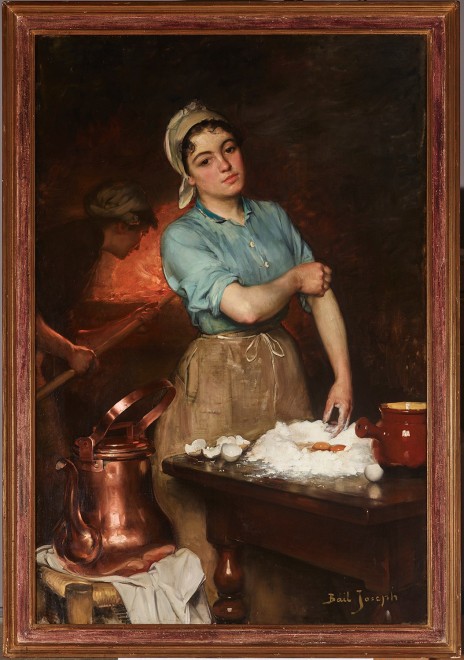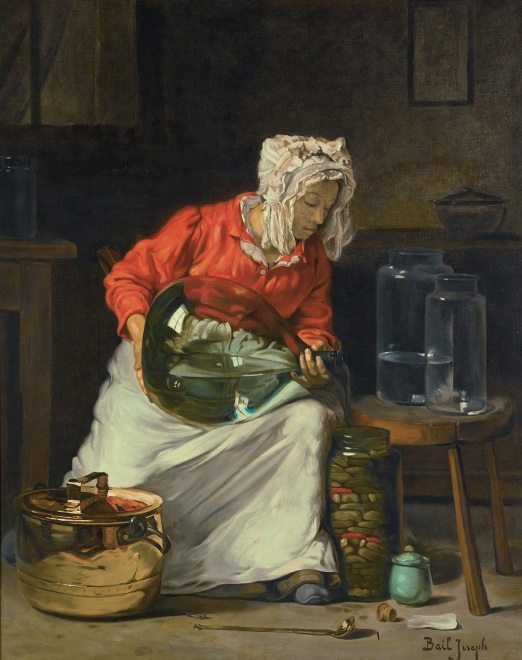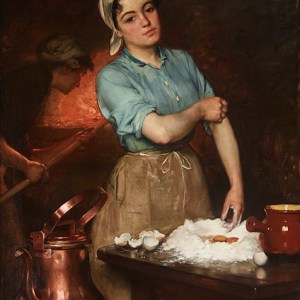Provenance
Artist to Mrs Cambon, his longtime and faithful governess
Thence by descent to her niece’s husband
Thence by descent to the husband’s second wife
Literature
Thomas Docherty, The Politics of Realism, London, Bloomsbury, 2021, reproduced on cover
Catalogue note
While young kitchen helpers, usually mischievous boys, dominate much of Joseph’s Bail’s subject matter, he also had an interest in showcasing the essential role of women. He chose to depict kitchen maids, rural housewives and following a trip to the Hospices de Beaune in Burgundy at the end of his career, he turned his attention to painting large scale depictions of the Sisters of Charity.
The subject of a kitchen maid had been a popular motif in paintings dating back to Chardin, an artist clearly admired and emulated by Joseph Bail. There has much discussion about Chardin’s motivation in focusing on this subject, with a consensus that symbolism played an equal, if not superior role to a simple visual interpretation. Bail’s kitchen maids were more in the spirit of the earlier generation of mid-nineteenth century realist painters, notably Théodule Ribot and François Bonvin, whose goal was to present scenes from daily life as acceptable subjects, on par with the traditional, less controversial themes that the art establishment expected and revered.
It is difficult to date Joseph Bail’s paintings. Stylistically there is not great variation in technique or subject, although his earliest works were primarily still life paintings Throughout his career, he would successfully integrate still lifes into his genre scenes; one thinks of gleaming copper pots, brass vessels and earthenware crockery which appear in almost all his figure paintings, such as we see in The Pastry Chef. Here, surrounded by the tools of her trade - a copper kettle and small brown crock - a kitchen maid cracks eggs into a pile of fine white flour. She rolls up her sleeves in order to not get covered with the flour, which already coats her fingers (a wonderful detail in the painting, which serves to highlight Bail’s verisimilitude in depicting diverse surfaces and textures). Behind the pastry chef, a second woman stokes a blazing fire in an oven, its fiery glow reflected on her face. The subject appears unique in Bail’s oeuvre, and because of its similar size and focus on a specific kitchen labor, could be compared with his 1897 Salon entry, Le Ménagère (The Housewife), which depicts a woman making pickles (Paris, Palais du Luxembourg, fig. 1). Could both works have been part of an intended series of paintings depicting kitchen labors? The Pastry Chef has only recently come to light; perhaps other paintings of similar scale and subject will be discovered, advancing the notion of a series.
The Pastry Chef was reproduced on the cover of Thomas Docherty’s 2021 book, The Politics of Realism, which examines the role that realism plays in the negotiation of social, political, and material realities from the mid-19th century to the present day: perhaps a 21st century commentary on Joseph Bail’s intention.






